|
Music Is The Healing Force Of The Universe The Inconsistency of |
|
|
||||||||||||||||
|
January 1 2023
Lost Performances 1966 |
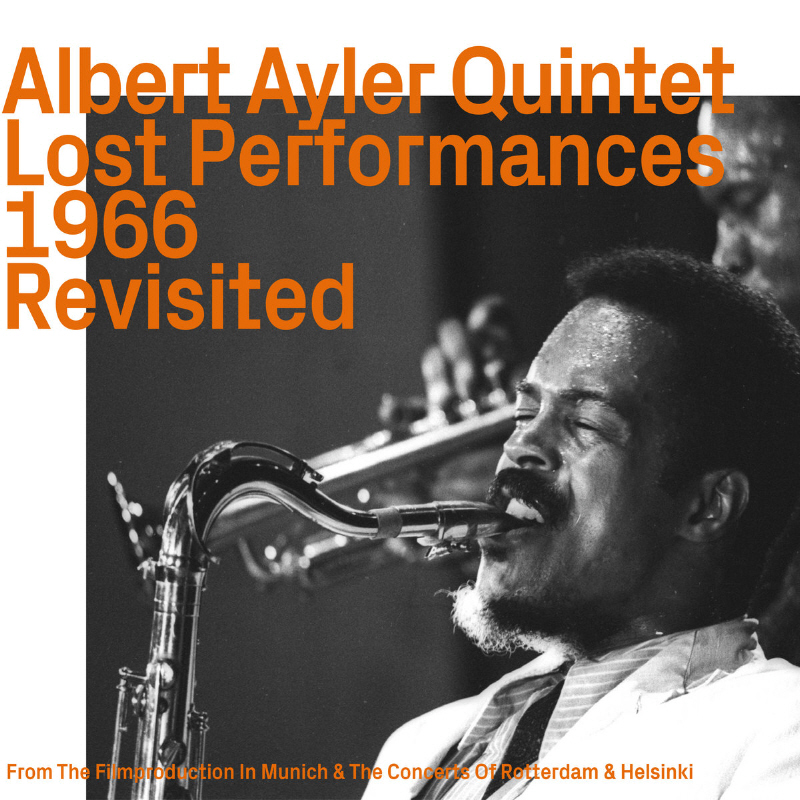 |
||||||||||||||||||||||||||||||||||||||||||
|
What a way to begin a New Year! Thanks to Werner X. Uehlinger and Hat Hut Records we now have the Helsinki concert from the 1966 European Tour and the music from the fabled Munich TV programme. We also have the Rotterdam concert from the same tour, rescued from the legal limbo of the Holy Ghost box set. The Helsinki concert was televised but the video has been lost, however the Munich video is available (as explained last November). There is still some mystery surrounding the Rotterdam concert because of that 13 minute ‘Rotterdam Tape’ which came from a TV programme broadcast in The Netherlands in 1970 (hence the title) but its true origin remains obscure. At the moment the only concert from the 1966 tour officially unreleased (although the bootleg version is available here) is the one from Copenhagen. And, since none of the known material from 1966 matches the ‘Rotterdam Tape’ the obvious conclusion is that there’s another televised concert, part of which had existed, video intact, until at least 1970. Still, let that go for now and celebrate what we have here. LOST PERFORMANCES 1966 REVISITED Tracks: 1. Ghosts (2:51) Personnel: Donald Ayler (t), Albert Ayler (ts), Michel Samson (v), Bill Folwell (b), Beaver Harris (d) Recorded: Tracks 1 to 3: Tracks 4 to 7: Tracks 8 to 12: Lost Performances 1966 Revisited (Hat Hut (Switzerland) ezz-thetics: LC 91771) is currently available for download from bandcamp and the CD version will be issued later this month. * Revelations and Holy Ghost (the book) |
||||||||||||||||||||||||||||||||||||||||||
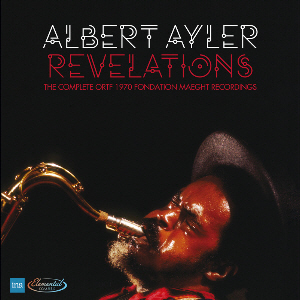 |
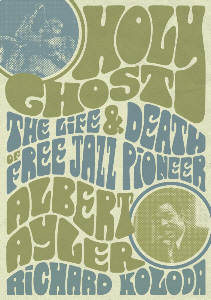 |
|||||||||||||||||||||||||||||||||||||||||
|
Two of the standout releases from last year, Elemental Music’s Revelations: The Complete ORTF 1970 Fondation Maeght Recordings and Richard Koloda’s Holy Ghost; The Life & Death of Free Jazz Pioneer Albert Ayler both featured in various ‘Best of the year’ lists towards the end of 2022. Revelations appeared in The New York Times and The Quietus. Holy Ghost ... headed Frank Alkyer’s selection of ‘Jazz To Read By’ in DownBeat and was described in Richard Brody’s ‘A Year In Reading’ at The Millions as “a meticulous and passionate critical biography of Albert Ayler”. There are also two new reviews of Richard Koloda’s book at Jazz Weekly and on the Northern Irish Marlbank site. And here’s a couple of photos of Richard’s book-signing event at Cleveland’s Visible Voice Books. |
||||||||||||||||||||||||||||||||||||||||||
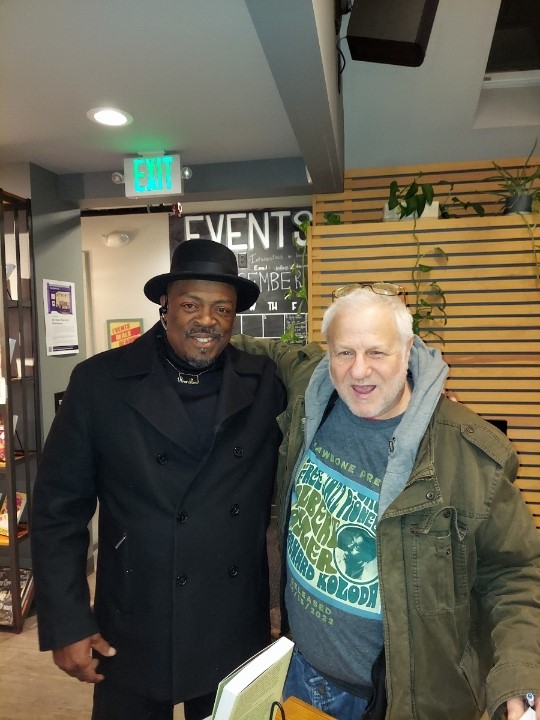 |
||||||||||||||||||||||||||||||||||||||||||
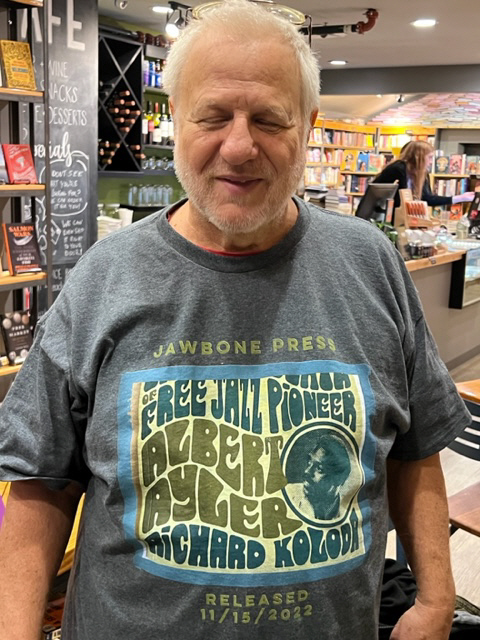 |
||||||||||||||||||||||||||||||||||||||||||
|
Richard added this note to his facebook post of the first one: “This is another photo of me at the book signing at #visiblevoicebooks I am standing next to Curtis Roundtree --who is Albert Ayler's son (you will note the physical resemblance to Don Ayler in the youtube video which showed Don at that age) ironically Mr. Roundtree's grandchildren play saxophone and trumpet.--I always remember how kind his late mother was when I interviewed her --she baked cookies for my daughter and myself. The youtube video of Don Ayler is the one taken from Richard’s interview with him and his father, Edward:
|
||||||||||||||||||||||||||||||||||||||||||
|
Some other stuff 1. Sorry, doing this at speed, so here’s a bunch of things. Dirk Goedeking let me know about a couple of new releases from those legends of Free Jazz, Archie Shepp and the Sun Ra Arkestra - not together. Archie Shepp has a follow-up single to his Ocean Bridges with his nephew Raw Poetic, entitled A Mile In My Head. |
||||||||||||||||||||||||||||||||||||||||||
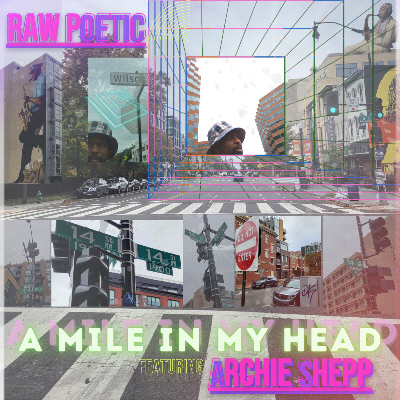 |
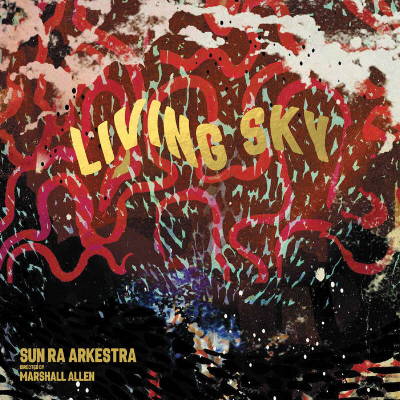 |
|||||||||||||||||||||||||||||||||||||||||
|
And the Sun Ra Arkestra, under the leadership of Marshall Allen since Sun now resides on Saturn, has a new album out, Living Sky, which is available on bandcamp. 2. Dirk also sent a link to this photo of John Tchicai with Marte Röling and her designs for reissues of several LPs for the Fontana label. Her design for Albert Ayler’s Spirits is the one at the centre, left but it was never used. This is one of the photos taken by Nico Van Der Stam (some of which were also used in Richard Koloda’s book) which can be viewed on the Amsterdam City Archive site. |
||||||||||||||||||||||||||||||||||||||||||
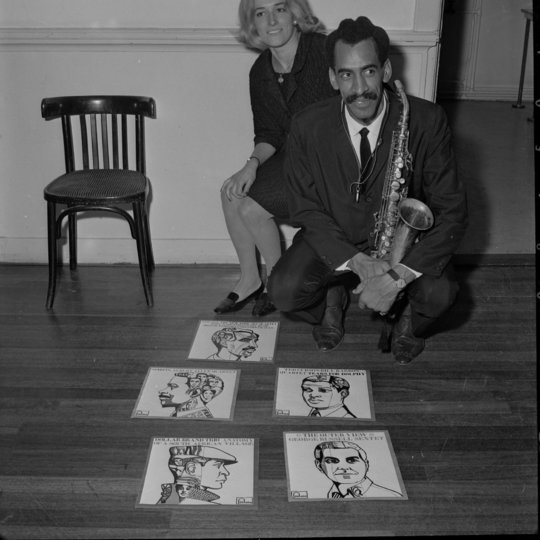 |
||||||||||||||||||||||||||||||||||||||||||
|
Leading on from that was this ‘imagined’ poster by Hannah Cooper for the November 1966 Berlin Jazz Festival and Dirk also sent the original version. |
||||||||||||||||||||||||||||||||||||||||||
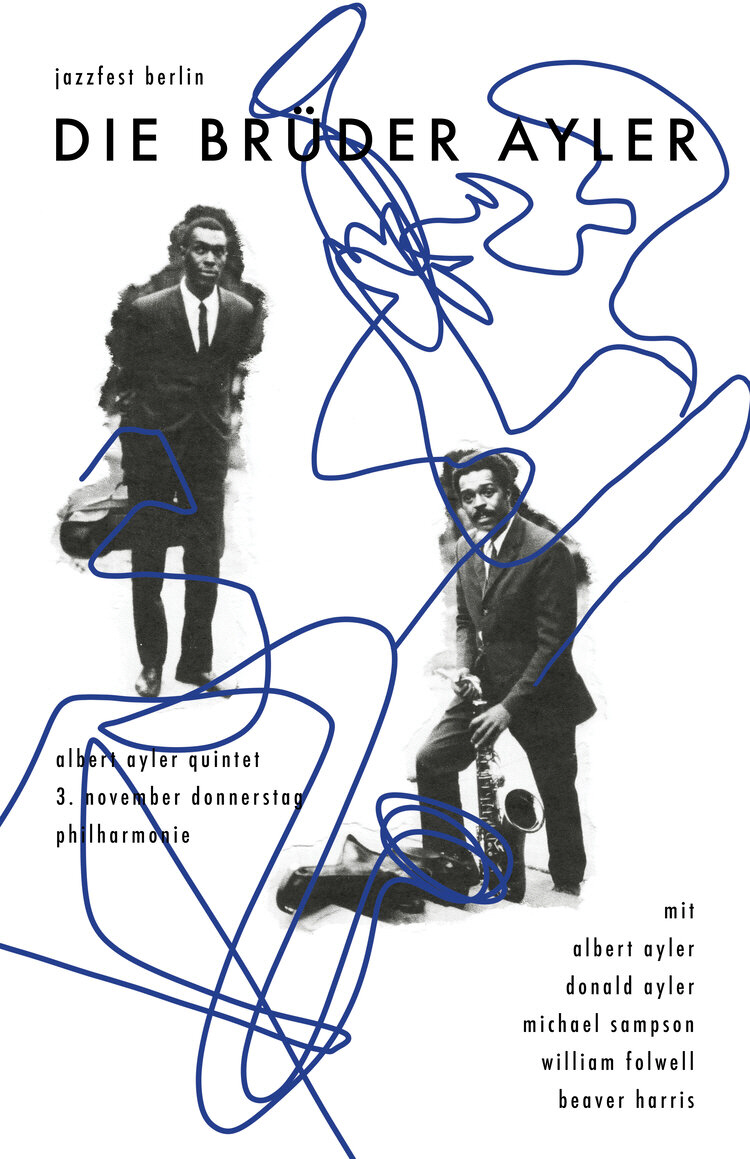 |
||||||||||||||||||||||||||||||||||||||||||
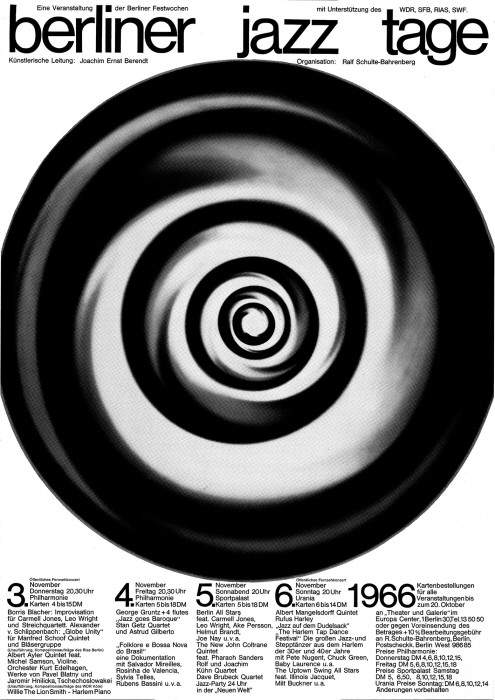 |
||||||||||||||||||||||||||||||||||||||||||
|
3. There’s an essay by Robin D. G. Kelley at the Boston Review entitled ‘Flowers for Farah’. It’s ostensibly about Farah Jasmine Griffin, but it begins with some thoughts about David Murray’s ‘Flowers For Albert’ and Albert himself. * 4. Following on from the death of Pharoah Sanders last September, Kees Hazevoet sent me an intriguing extract from an interview with Sonny Rollins, originally published in the Dutch magazine, Jazz Wereld (No. 13, July/Augist 1967, p.7). The page is available here, and Kees’ translation of the relevant bit (towards the end of the left column) is as follows: “I didn’t hear Pharoah (Sanders) with Coltrane yet, but heard him with Ayler. I also like Ayler. He played, what they called, ‘traditional’, when he was in Europe at the time. At least, that’s what they told me. Time wasn’t ready for it. He was more or less inspired by one of his idols.” Kees adds: (not clear which ‘idol’ he meant - could it be Bechet?) 5. A variety of things from youtube: ‘Elegía Para Albert Ayler’ by The Dirty Coal Train. A tribute to Albert Ayler by Kris Saknussemm. Jorma Tapio, Pepa Päivinen & Tane Kannisto at Tulkinnanvaraista. And for the heathens among you who play Christmas music after Christmas, the Mars Williams Ayler Xmas concert, streamed on 23rd December, is still available. 6. And finally, What’s New September to December 2022 is now in the Archives. Happy New Year! ***
February 1 2023
Michael Snow (10/12/1928 - 5/1/2023) Michael Snow, the Canadian artist and film-maker, died on 5th January at the age of 94. He is celebrated on this site as the instigator of Albert Ayler’s 1964 ESP album, New York Eye And Ear Control. Over the years I’ve mentioned how that recording came about, how it was envisioned as a totally free improvisation, and although it didn’t really follow Michael Snow’s wishes in that regard, it has still come to be mentioned in the same breath as Ornette Coleman’s Free Jazz and John Coltrane’s Ascension as one of a triumvirate of landmark ‘large group’ recordings of the Free Jazz revolution. The music was recorded by Paul Haines at his home in New York specifically to be used as the soundtrack of Michael Snow’s film, New York Eye and Ear Control.
|
||||||||||||||||||||||||||||||||||||||||||
|
Towards the end, the film includes several shots of the musicians [Ah, would that they were playing!] and when it was really difficult to see a copy of the actual film, Kasper Collin’s use of the clip of Albert staring moodily to camera, in his documentary, My Name Is Albert Ayler, became the iconic image of that film and was used in the publicity material. There are several obituaries of Michael Snow: The New York Times, FYI Music News, the British Film Institute and Artforum. Prior to his hearing of the death of Michael Snow, Dirk Goedeking had collected a selection of ‘walking woman’ pictures which he was going to send for this month’s site update, as he explains: ‘Originally I wanted to send you a variety of artworks, that are on sale right now. The first thing I saw was “Hub”, a “Walking Woman” work by Michael Snow, at James Rottman’s in Toronto for $35,000. Looking at it, I changed my plans and decided to make a collection of circular “Walking Woman” works. So here they are: 13 round prints, cds, records and cookies. What a coincidence: just as I was prepearing the jpgs, I read about Michael Snow’s death. So this is my orbituary for him.’ |
||||||||||||||||||||||||||||||||||||||||||
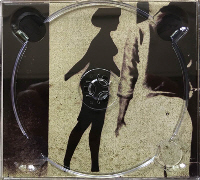 |
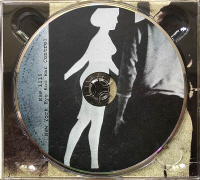 |
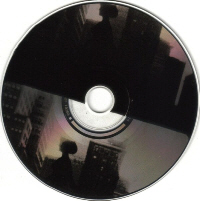 |
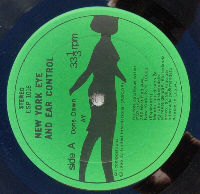 |
|||||||||||||||||||||||||||||||||||||||
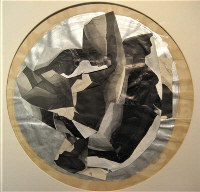 |
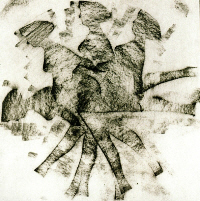 |
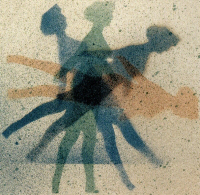 |
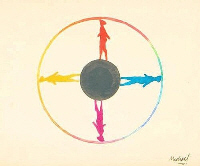 |
|||||||||||||||||||||||||||||||||||||||
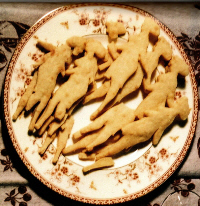 |
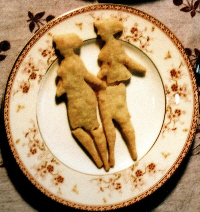 |
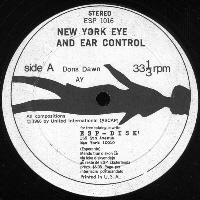 |
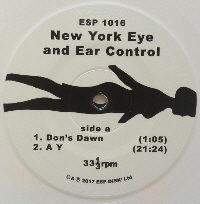 |
|||||||||||||||||||||||||||||||||||||||
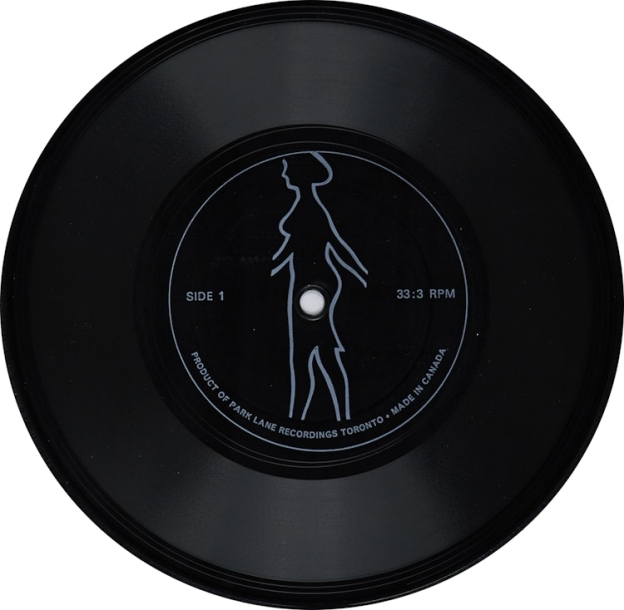 |
||||||||||||||||||||||||||||||||||||||||||
|
Margaret Davis Grimes (13/8/1940 - 7/1/2023) Margaret Davis Grimes passed away on 7th January at the age of 82. She was a frequent contributor to this site over the years, particularly after her marriage to Henry Grimes. There’s a full obituary on the JazzdaGama site. |
||||||||||||||||||||||||||||||||||||||||||
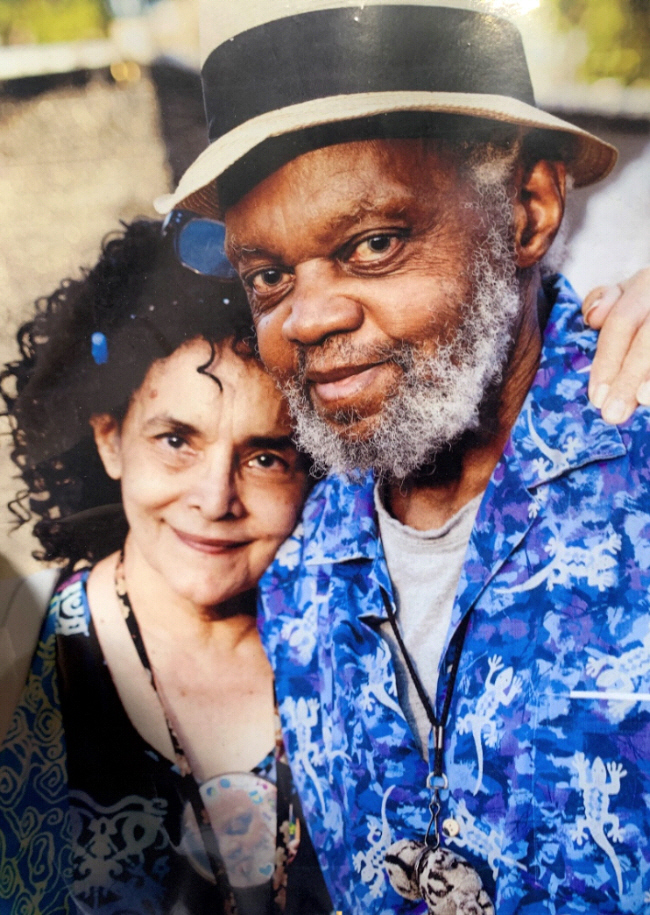 |
||||||||||||||||||||||||||||||||||||||||||
|
Book Talk The Jazzwise site has a long article by Stuart Nicholson about Albert Ayler which credits Richard Koloda’s Holy Ghost; The Life & Death of Free Jazz Pioneer Albert Ayler as the source for much of the information. It was originally published in the December issue of the magazine but is now available online. Holy Ghost ... also gets good reviews in the International Times and on the NYS Music site, and there’s an honourable mention in Rodrigo Llanes Salazar’s ‘The favorites of 2022’ in connection with the release of Revelations. Richard also contributed on 7th January to David Freeman’s Author Archive Podcast and there’s a German review of the book on the Deutschlandfunk radio station. And on the subject of German books and radio stations. There’s a broadcast on NDR on 13th February featuring the soundtrack for Friedrich Christian Delius’ 2018 book, Die Zukunft der Schönheit (“The Future of Beauty”), which, presumably is At Slugs’ Saloon. Lee Santa, famous photographer of jazz musicians, let me read a rough first draft of the autobiography he’s working on, which is either going to be titled My Journey Into Jazz or Adventures of a Jazz Fan. Although he never photographed Albert or Don Ayler he did meet them once and he kindly let me add a couple of extracts from his book here: ‘Meeting Albert Ayler and Alice Coltrane’s Cosmic Concert ... The next day while walking the streets of Manhattan, I saw a poster advertising a Carnegie Hall concert billed as the “Alice Coltrane Cosmic Concert” featuring Alice Coltrane (p), Pharoah Sanders and Joe Henderson (ts), Reggie Workman (b), Jack DeJohnette (d). Easter Sunday morning I purchase a ticket for the concert. In the meantime, I did some sightseeing in the area. ... I had taken off my leather jacket and draped it over my shoulder, causing the concert ticket I had just purchased to slip out of my inside breast pocket. I didn't discover my ticket was missing until just before arriving at Carnegie Hall. Naturally, I was very upset by this development. Once inside the lobby I immediately went to the ticket counter and explained to a clerk what had happened. Without question or hesitation, the understanding older woman gave me a new ticket at no charge. Feeling extremely fortunate and amused by the clerk’s eccentric manner and generosity, I started across the lobby when I see a man who I am sure is Albert Ayler. I approached him and asked if he indeed was. Yes, he said. I then asked him excitedly if he was playing tonight. Unfortunately he wasn’t, but he handed me a flyer advertising a concert that he and his brother Don were giving in a couple of weeks. He then introduced me to Don. I told Albert how much I liked his music, explaining that my first exposure to his music happened when I was in the Army and had purchased his ESP album, Spiritual Unity. I explained how it floored me (to this day it is one of the most incredible albums I have heard). I went on and on about how much I liked his music. He was very attentive and we spoke to each other for at least five minutes. I was struck by the fact that this hero of mine was giving me so much of his time, that he was genuinely interested in what I had to say. All this time Albert’s brother sat on a nearby steam radiator, quietly listening to our conversation. Both of them impressed me as musicians who sincerely cared what their fans thought and were more than happy to engage with them, which is something you can’t say about every artist. When we concluded our talk I found my seat, which was front-row center, a much better seat than the one I’d purchased earlier. I couldn’t believe such good luck had come from my miscue near the Sheep Meadow, when I carelessly threw my coat over my shoulder. Here’s how good the seat was. About three or four seats over from me sat another of my heroes, Ornette Coleman. With him was the filmmaker Shirley Clarke, whose final film would be her 20-year study of Coleman, Ornette: Made in America (1985). The flyer Albert Ayler gave me has had an interesting history. Sometime around 1998, I emailed a copy of it to Jeff Schwartz, whose manuscript, Albert Ayler: His Life and Music, was posted on the Internet. Around 2002, I was contacted by John Fahey’s Revenant Records. The company had been trying to locate a copy of the flyer and had learned from Mr. Schwartz that I had one. They asked me about getting a color copy of the flyer to use in the book that would accompany a CD box set of previously unreleased Albert Ayler material. I was more than happy to give it to them. The best part of this for me is that in a small way I have contributed to one of the best CD box sets ever produced for a jazz artist (Albert Ayler, Holy Ghost, RVN 213), and to the historical record of one of the most important musicians in all of jazz—Albert Ayler.’ © Lee Santa There’s also this Sunny Murray story about Don Ayler, of which I don’t believe a word: ‘... Sunny told a story about Donald Ayler once borrowing Dewey Johnson’s trumpet so he could sit in at a Dewey gig. (Dewey, sometime after that gig, had a nervous breakdown and had been institutionalized.) As Sunny described it, Ayler got Dewey’s trumpet vibrating so much that the valves had loosened and popped out one-by-one until he was playing it with only his fingers over the holes where the valves had been. Sunny finished the story proclaiming that “Dewey has been institutionalized ever since.”’ © Lee Santa Lee Santa’s photos are available here. And finally, back to the Koloda book, but not as you know it. Dirk Goedeking came across this on twitter: Fritz Pape tweets: “my brother and his family got me the new albert ayler book for my birthday, but it didn't arrive in time so my nephew drew a picture of the cover.” |
||||||||||||||||||||||||||||||||||||||||||
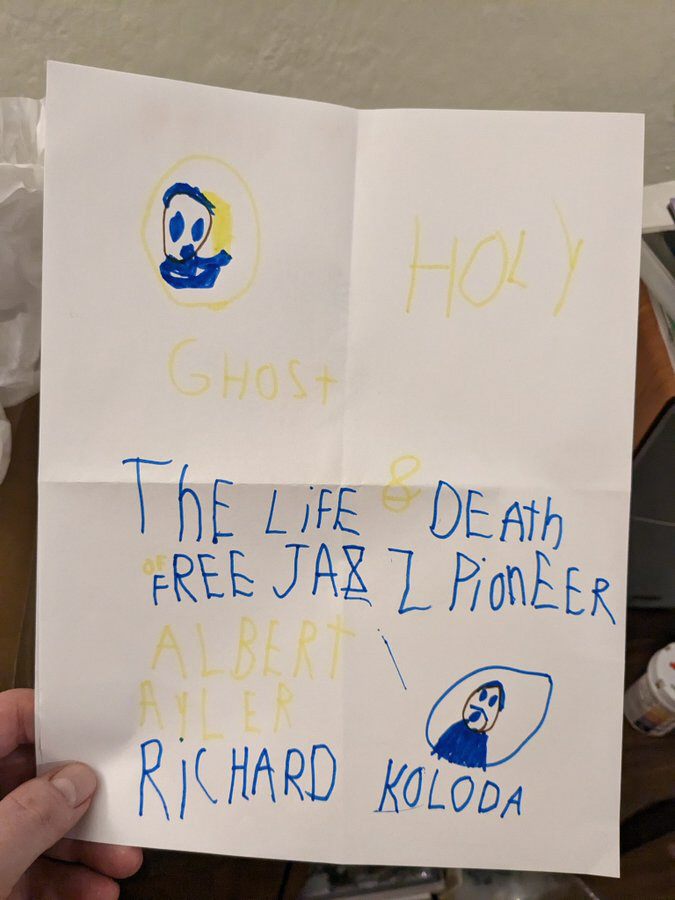 |
||||||||||||||||||||||||||||||||||||||||||
|
Record Talk New Year, New Sections; which will be abandoned, like all New Year’s Resolutions, next month. Actually we begin with a return to last month’s big new release from Hat Hut. For a change here’s the back cover of Lost Performances 1966 Revisited: |
||||||||||||||||||||||||||||||||||||||||||
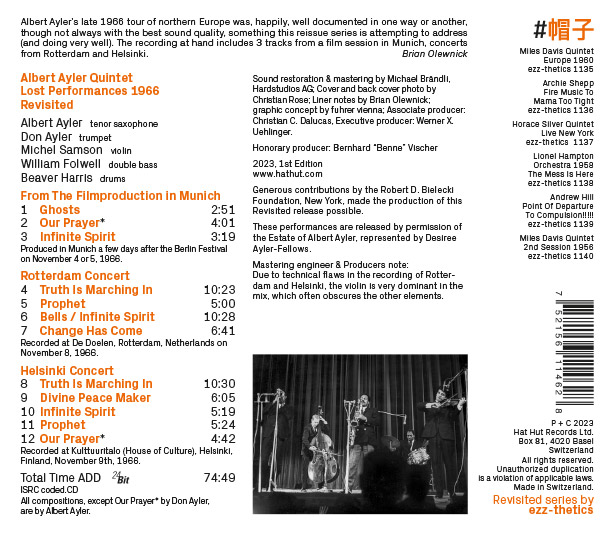 |
||||||||||||||||||||||||||||||||||||||||||
|
I’ve now had a chance to listen to this and, as usual, Michael Brändli has done his remastering magic on the 1966 concerts in Rotterdam and Helsinki. Rotterdam has been available before in the Holy Ghost box, but this is the first release of the Helsinki concert. Comparing the former with the previous version, this seems to favour the strings and drums a bit more, so that there’s more emphasis on the whole ensemble. It makes one realise how close the Ayler Quintet was to the collective improvisation of the original New Orleans bands, with Michel Samson’s violin playing an equal part with the two horns. Although he does get to show off before his home crowd in the long solo section during the wild version of ‘Change Has Come’ which closes the concert. The Helsinki concert, recorded on the next night for a TV broadcast, is more of the same - which is not meant as a flip dismissal, more of a celebratory welcome of yet another magical half-hour of music. Again, the strings are to the fore, and it’s nice to hear what Bill Folwell’s up to - one usually gets the impression, from the photos as much as anything else, that he’s just sawing away in the background. Not so. But I think the highlight of the album for me is the Munich TV session. I’d never heard this at all, and I still haven’t seen it, but I get the impression that it was an attempt to play down the wilder excesses of the Ayler Quintet’s music and just play the tunes. Rather like the first side of Love Cry. And, frankly I have no objection to that. Reading some critics of Ayler, (the ones who liked him, not those who just dismissed him out of hand because he wasn’t playing a banjo) you get the impression they don’t like tunes. Whether that’s a jazz critic thing - you ignore the tune at the start to find the real meat in the following improvisations - or whether it’s just an academic approach to ‘le free jazz’ - you’ve made the effort to get used to the noisy bits, so noisy bits is what you want to hear. Personally, I like tunes, and the selection in the Munich TV recording is spot on. ‘Ghosts’, then a beautiful version of Don’s ‘Our Prayer’ with the strings of Michael Samson and Bill Folwell giving fantastic support, and a final romping ‘Infinite Spirit’ with Beaver Harris getting his chance to shine. The other odd thing about the Munich recording, short though it is (barely 10 minutes) is that this is the only recording of this particular line-up in a studio set up, with no audience. Everything else recorded by this band, and there’s a lot of it, is live, concert recordings. How anyone, back in 1966 or now, could find Ayler’s music upsetting or violent, or unlistenable, or unmusical, or anything other than simply beautiful and joyous, is beyond me. Next month I will address Revelations, a copy of which I bought myself for Christmas. I’ve only listened to the first CD so far - and, again the remastering is impressive - but I need some more time to do the other three when I’ve not got men on the roof hammering away like Beaver Harris. By the way Revelations made it into the 17th Annual Francis Davis Jazz Poll, at No. 3 in the ‘Rara Avis (Reissues/Archival) section. And Steve Tintweiss let me know about the longer review of Revelations by Daniel Margolis, published last May but missed by me, in DownBeat. There’s a load of stuff about Jason Moran’s new album online. It’s called From the Dancehall to the Battlefield and is a tribute to James Reese Europe. I first came across his name and the incredible story of his Harlem Hellfighters band in ‘Black Music in Europe: A Hidden History’, a radio series by Clarke Peters, broadcast in 2017 by the BBC. There’s a feature on the new album and its inspiration on KALW and Stereogum, and a review at The Quietus which includes the track which made Jason Moran’s album pop up when I did my google news search this month. The track is the old hymn ‘Flee as a Bird to Your Mountain’, which the band would play when a soldier did not return from the battlefield, but mingled with it is Albert Ayler’s ‘Ghosts’ played by tenor saxist Brian Settles. *** And finally ... talk Just a couple of things. Albert Ayler’s influence on Jairus Sharif. And another film with a bit of Ayler on the soundtrack. This one is Passages where the music is described thus: “The music is an off-beat mix, ranging from an English a capella folk song by Janet Penfold to a blast of Albert Ayler’s free-jazz take on the ‘Marseillaise’. The latter accompanies one character’s breakneck bike ride through Paris, bringing a final Nouvelle Vague flourish to a film that wears its borrowed Frenchness with seductive grace and panache.” Which makes one wonder whether Ayler was chosen as an hommage to an earlier film about life in gay Paree, Patrice Cheréau’s L’Homme Blessé (The Wounded Man) in which “a blast from avant-garde jazz artist Albert Ayler’s sax heralds Henri (Jean-Hugues Anglade) and his family racing for a bus to the train station from which his younger sister will leave for her student vacation.” ***
March 1 2023
1966 European Tour on vinyl |
||||||||||||||||||||||||||||||||||||||||||
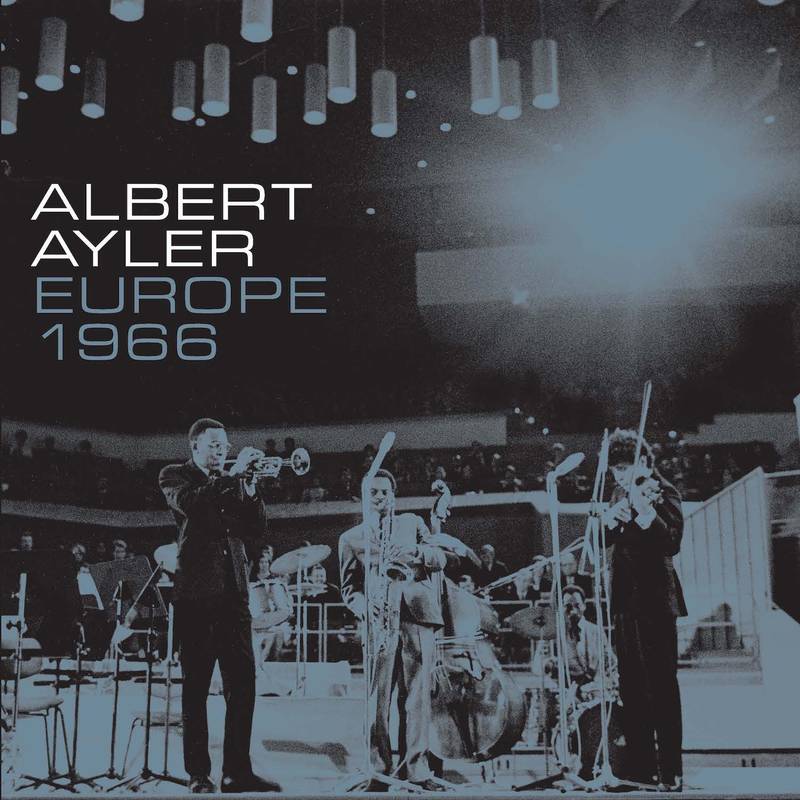 |
||||||||||||||||||||||||||||||||||||||||||
|
After last year’s Ayler coup for Record Store Day with the release of Revelations (the complete Fondation Maeght concerts) this year’s offering is a vinyl version of HatHut’s 2021 2 CD compilation, Albert Ayler Quintet 1966: Berlin, Lörrach, Paris & Stockholm. Revisited (ezz-thetics 2-1117). There’s more information about this year’s jazz selections for Record Store Day on youtube. * Revelations And since I’ve mentioned it, I guess I should add my belated review (promised last month) of the 4 CD set of Revelations here. |
||||||||||||||||||||||||||||||||||||||||||
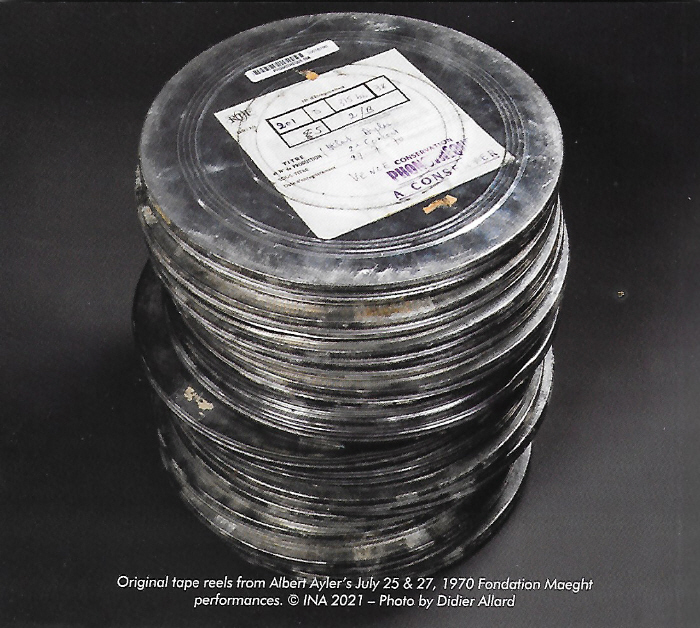 |
||||||||||||||||||||||||||||||||||||||||||
|
First of all I have to say that REVELATIONS: The Complete ORTF 1970 Fondation Maeght Recordings is a fantastic achievement and a beautiful product of historical significance, at least as far as the story of Albert Ayler is concerned. The remastering of the original radio recordings is excellent and the 100 page booklet which accompanies the two double CD cases, contains a wealth of new material, including an incredible number of terrific photographs. Any reservations I do have about Revelations is down to my inability to come to terms with what we may call, late-period Ayler. I apologise to anyone who is annoyed by my intransigence. I first heard these recordings in their raw, unedited, unremastered state a few years ago and my first reaction was that the second concert was a lot better than the first. Hearing them again I still think so. There are obvious reasons for this. Ayler’s attitude to his rhythm sections (at least since the early days with Sunny Murray and Gary Peacock) seems to be to hire whoever’s available and don’t bother rehearsing, just throw them in at the deep end (although I should add that Tintweiss and Blairman are both excellent here). Added to that, Call Cobbs missed his plane, so missed the first concert. Added to that is the new frontline pairing of Mary Maria and Albert Ayler. As far as I can make out, this was the first appearance at a concert (and a big venue with a thousand strong audience) of Mary Maria as a performer (she had M.C.’d the Village Theater performance in February 1967) alongside Albert. Finally, the concert occurred after the bad reviews for New Grass and Music is the Healing Force of the Universe were in, so Albert had no idea what kind of reception he was going to get. As it happened the response of the French crowd was fairly ecstatic, especially when ‘Ghosts’ appeared - Albert’s final recording of this iconic tune. But the concert as a whole is a bit ragged. There is one very odd track - listed as ‘Revelations 3’ (all the new material is designated thus) - where Mary Maria is ‘freaking out’ on her soprano sax, while Albert plays a very simple, monotonous tune over the top. I think it’s an attempt to replicate the effect of Don Ayler playing simple trumpet lines beneath his brother’s ‘freak out’, but it doesn’t work. And the final encore, ‘Speaking in Tongues’ is ... well it’s rubbish, really. But the second concert is spectacular. True, we still have to suffer ‘A Man Is Like A Tree’ and the rest of the ‘poetry’, but there seems to be less Mary Maria on the second night. However the main difference is the arrival of Call Cobbs. Not particularly for his musical addition to the mix, but I think just his presence calmed the situation down and allowed Albert Ayler to give of his best. Call Cobbs had been with Albert since almost the beginning of his recording career, from Swing Low Sweet Spiritual in 1964. Not a permanent member of his band, but contributing tracks to Spirits Rejoice, The Village Concerts, Love Cry and New Grass. So the second concert opens with ‘Truth Is Marching In’ and includes a rollicking version of ‘Holy Family’ and other favourites. There’s even a good Ayler vocal track on ‘Thank God For Women’, which is just very jolly. The Italian bootleg version of the first concert, later released by ESP as Live on the Riviera, selects the best tracks and changes the order, so that the concert seems to end with a triumphant version of ‘Ghosts’. At least that’s how I reacted to it when I first heard it. Just as I’d reacted to the first volume of the Shandar release of Nuits de la Fondation Maeght (I never managed to get the second volume until it appeared on CD). The Shandar release took all of its tracks from the second concert, and Volume One did not feature Mary Maria at all. After all the talk about Ayler selling-out with New Grass, the Shandar release did seem to set the world aright again. Now we can hear the full concerts, maybe we have to revise that first opinion. I feel it’s a bit like those endless Director’s Cuts and different versions of Blade Runner, where you end up just wanting to see the original theatrical cut with the studio-imposed film noir narration and the codged together happy ending with the out-take from The Shining which makes no sense at all. For the first concert, I’d be happy with the Italian bootleg version of Live on the Riviera. But for the second concert, no that’s indispensable. There’s too much great Ayler saxophone on there. So, many thanks to Zev Feldman, Jeff Lederer and Elemental Music for finally bringing these concerts out of the vaults and into the sunshine again. ___
That’s the review, but there are a couple of addenda relating to the Revelations booklet. This contains a number of pieces about Albert Ayler from various musicians, one of whom is the late Allen Blairman. I’ve lifted that entire and placed it below, so hopefully that’s o.k. I remember trying to contact Mr. Blairman in the early years of this site (when I still did things like that) and got nowhere, so I just wanted, finally, to add his voice here. Before that though, there is another item in the booklet, in Ben Young’s piece, which is a bit troubling. No matter our opinion of Mary Maria, it is a fact that she deserves a whole lot of credit for the concerts at the Fondation Maeght, yet there’s very little information about her in the booklet, beyond Jeff Lederer’s description of the tracks on the album. She is also mentioned on the final page in this dedication: “Dedicated to the memory of Albert Ayler, Mary Parks and Call Cobbs.” (Allen Blairman died just after Revelations was released). Which implies that Mary Maria (Parks) has died. Which could explain why this album could finally be released - for years, according to Bernard Stollman, Mary Maria’s lawyers were in a dispute with the Ayler Estate about the release of the Fondation Maeght film. So, who gets her royalties? I did hear that she had a daughter. Anyway, that’s neither here nor there, what does disturb me is the following bit in Ben Young’s piece: “So entered Mary Parks. ... She was his companion in and out of music, sometime concert producer, his managing agent, and eventually co-star. They were married in 1969. ... Elsewhere in these annotations Jeff Lederer tells the story instant-by-instant; Mary Maria recaps what she heard in the midst of it: “They go nuts for my work—even at the Maeght Foundation. The people stood up and screamed, wouldn’t let me leave the stage. To me, it was a beautiful thing for Albert. Suffice to say, there’s a lot to study here, and still more to muse on.”
So, musing on, I have problems with the marriage in 1969. The reason Mary Maria was always in dispute with the ‘Ayler Estate’, is that Albert never divorced Arlene Ayler, and so now the ‘Estate’ is managed by their daughter, Desiree Ayler-Fellows. So, was Albert a bigamist? Or was there an illegal Mexican divorce (oft mentioned, never proved) in the mix. Also, I muse where this interview with Mary Maria came from. Given the mention of 30 years since the Fondation Maeght, it was presumably conducted in 2000. By Ben Young himself? Or is it published somewhere? Also, the explanation always given as to why the material on Music Is The Healing Force Of The Universe and The Last Album is credited solely to Mary Maria Parks, is that Albert and Don had made a bad deal with Impulse in regard to their composer credits and the financial rewards therein, so to avoid the money which would flood in from the likes of ‘A Man Is Like A Tree’ going into the wrong hands, Albert suggested removing his name. Having read Ashley Kahn’s book about Impulse, The House That Trane Built, I can quite believe that story (there seemed to be Bob Thiele as the friendly face of Impulse backed up by the less friendly money men). I am not questioning Mary Maria’s role as collaborator, but I think she stretches a point to say everything on the last three Impulse albums was all her own work and Albert was just the saxophone player. Still, we must keep on musing. Now is not the time to just take Ted Joans’ opinion. ___
‘A PURE ARTIST; ALLEN BLAIRMAN REFLECTS ON PLAYING WITH ALBERT AYLER
I LIVED ON AVENUE B, the Lower East Side. My next neighbor was Wilbur Ware. Wilbur Ware lived around the corner from Philly Joe Jones, right up the street was Eddie Blackwell, around the corner was Archie Shepp and Richie Havens, Sun Ra, so this was like a haven for me. I would always be looking out of my window, and maybe in the morning and I just open a window and I’d be looking at the people. Then I look down and there’d be Billy Higgins. Yeah. And I’d say, “Billy Higgins, you want to have breakfast?” And he’d come up. I met also Andrew Hill like that. These were my neighbors for three years. Philly Joe Jones, Wilbur Ware. I saw Hank Mobley. I played with Kenny Dorham. I met him in a restaurant. He just said, “Do you want to play with me?” “Oh yeah. Yeah, sure.” Just like this. So I was always around and meeting all these different musicians. It was a great thing, better than Pittsburgh. New York was a haven at that time. Excerpted from an interview with Allen Blairman conducted by Zev Feldman on July 29, 2021.’ [From the Revelations booklet.] * Alan Silva Roy Morris emailed me about an interview with Alan Silva in a 1999 edition of Cadence which mentioned Albert Ayler. He kindly sent me the relevant pages and I extracted the following. I found Silva’s comments about the possibilities of Free Jazz musicians crossing over to the more populated pastures of rock music back in the hippy-time very interesting, especially in light of the above. |
||||||||||||||||||||||||||||||||||||||||||
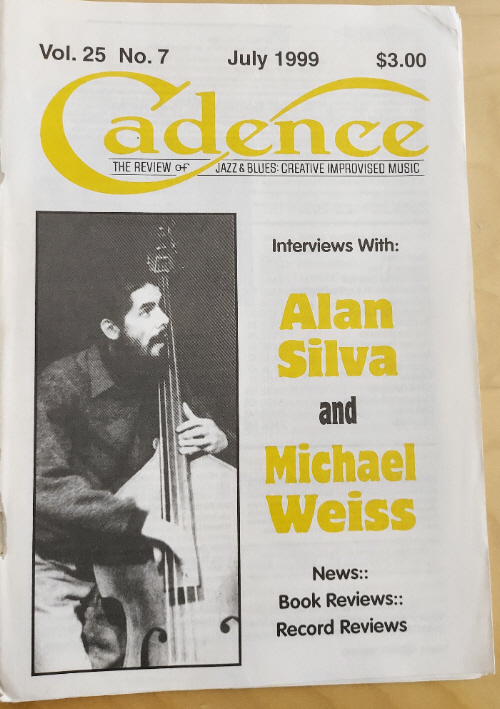 |
||||||||||||||||||||||||||||||||||||||||||
|
From Cadence (July 1999, Vol. 25, No. 7 - pp. 11,12, 14,18) ... That’s when I officially joined Cecil’s band as the regular bass player, after the Blue Note date. We did Unit Structures, and then Conquistador. . . . But when you come over to Europe, which has a tradition of supporting avant-garde ideas, it’s very easy for you to be avant-garde - because you’re not avant-garde, you’re just contemporary. So, ESP, from an American’s point of view, was brilliant, the impact that it had. That’s why I made the Center Of The World recordings, because I wanted artist control. I wanted to produce my own music. I wanted to produce my own music. I was not interested in being commercial; I was interested in the record, as an artist. The records I made, like the ESP one, we tried to make them as an art project. Which means that phonograph records are capable of being art objects. If Albert’s music had been sold in art galleries, or sound galleries, instead of being sold in the distribution chain - they’re competing with the price of the artwork, relative to commercial artwork. In the long run, that’s what’s happening today, after being in the record business for twenty-five years. Back in the 1950’s. you’d have to sell at least ten thousand copies of a Jazz record to get a contract. Albert was not selling ten thousand, he was selling, like, one thousand. ESP was able to pioneer all the little companies that we have today. We have much more of a possibility of documenting our music today because of that. I think that Bernard may have wanted to be commercial, if he could market it enough. But, like CBS, when they tried to market some free Jazz of Burton Greene - it was a market problem. It’s like trying to market John Cage, or Terry Riley, or any other kind of music that’s so marginal. * More reviews of Richard Koloda’s Holy Ghost... Here’s the list: Holy Ghost is one of the Staff Recommendations of the City of Lincoln Libraries. It’s reviewed by Scott Scholz, who also devotes an episode of the Polley Music Library show to ‘The Music of Albert Ayler’. Ken Waxman’s review on the JazzWord site. Fabricio Vieira has reviewed it for the Portuguese/Brazilian Free Form, Free Jazz site. Jerry Jazz Musician has an extract from the book. PostGenre has it among its Capsule Reviews. And finally, There Stands The Glass. * A couple of things from Dirk Goedeking to end with. This photo of the Brothers Ayler has been on this site for a while now, but in a fuzzy newspaper clipping from the Cleveland Plain Dealer. This is a pristine version of Edward J. Solotko’s photograph taken from the twitter feed of the Cleveland Public Library. |
||||||||||||||||||||||||||||||||||||||||||
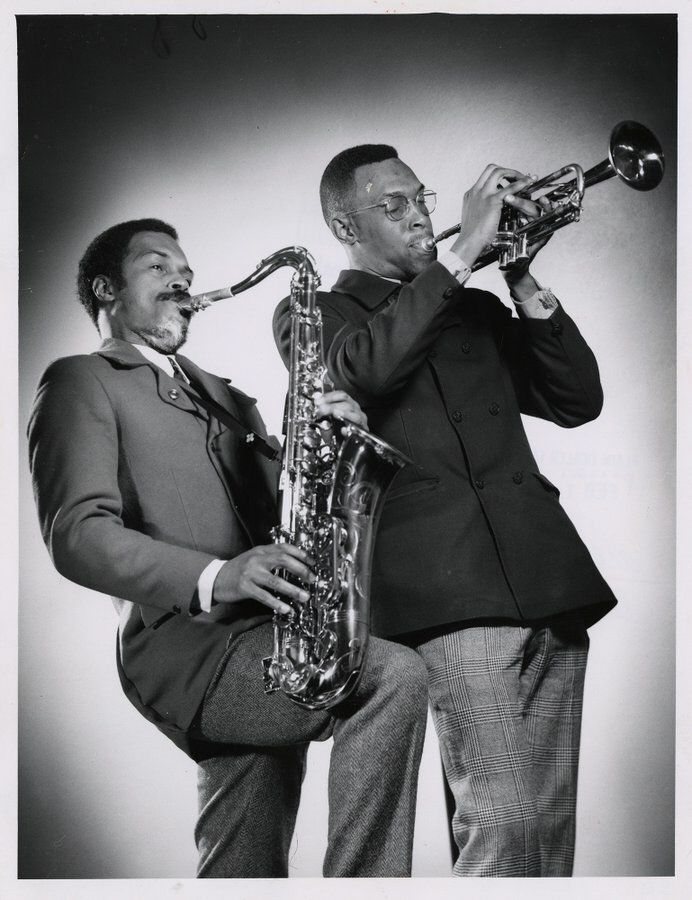 |
||||||||||||||||||||||||||||||||||||||||||
|
There’s been a lot of reading and not much music this month, so here’s a Louis Moholo record called Spirits Rejoice!. Dirk included it with some information about the South African band of the same name from around the same time which I mentioned a while back. The band’s name came from Ayler, but whether Louis Moholo was referencing the band or the Ayler LP, I don’t know. But, whatever the connection, this is great.
|
||||||||||||||||||||||||||||||||||||||||||
|
*** News from 2004 (January - June) 2004 (July - December) 2005 (January - May) 2005 (June - December) 2010 (January - June) 2010 (July - December) 2011 (January - May) 2011 (June - September) 2011 (October - December) 2012 (January - May) 2012 (June - December) 2013 (January - June) 2013 (July - September) 2013 (October - December) 2014 (January - June) 2014 (July - December) 2015 (January - May) 2015 (June - August) 2015 (September - December) 2016 (January - March) 2016 (April - June) 2016 (July - August) 2016 (September - December) 2017 (January - May) 2017 (June - September) 2017 (October - December) 2018 (January - May) 2018 (June - September) 2018 (October - December) 2019 (January - May) 2019 (June - September) 2019 (October - December) 2020 (January - April) 2020 (May - August) 2020 (September - December) 2021 (January - March) 2021 (April - July) 2021 (August - December) 2022 (January - April) 2022 (May - August) 2022 (September - December) 2023 (April - June) 2023 (July - September) 2023 (October - December) 2024 (January - March) 2024 (April - June) 2024 (July - September) 2024 (October - December) 2025 (January - March)
|
||||||||||||||||||||||||||||||||||||||||||
|
Home Biography Discography The Music Archives Links What’s New Site Search
|
